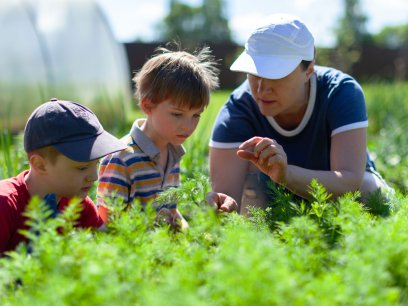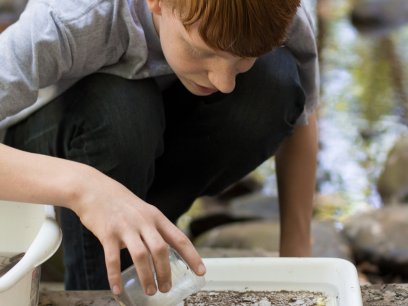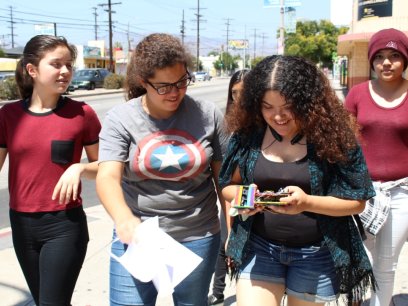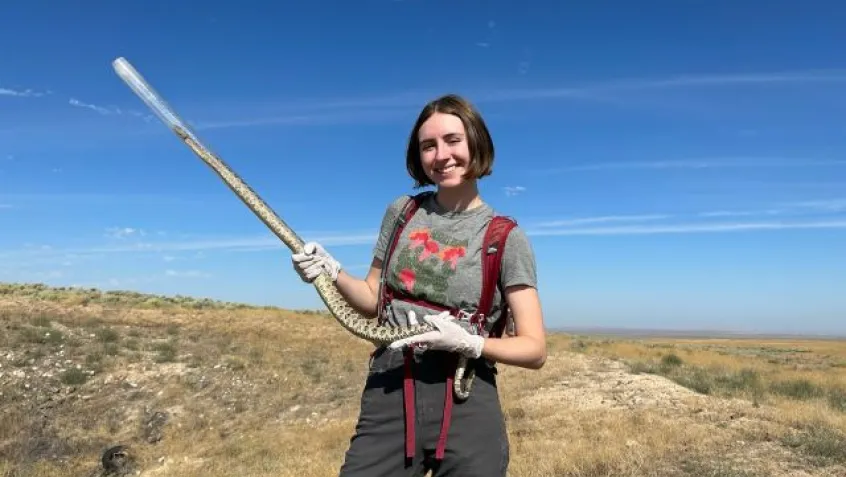
Abella Cathey had a problem.
Cathey, a senior at One Stone School—a small, independent high school in Boise, Idaho—was a good student. However, like many people her age, she was unsure about the direction her life should take after high school. And she’s not alone—a recent survey of 500 high school students found that 41% of them shared this apprehension, feeling unprepared to make career decisions or declare college majors upon graduation.
Fortunately, she would soon find her calling in an unexpected place—the dusty, high desert plains just south of town.
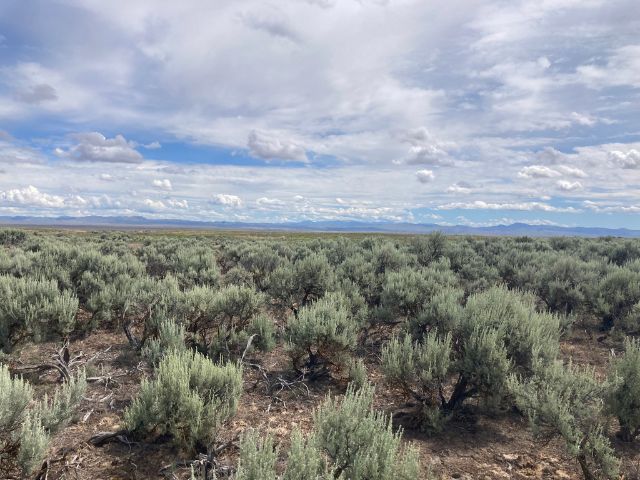
Resource Management in Idaho's Raptor Territory
In 2022, the Morley Nelson Snake River Birds of Prey National Conservation Area (NCA) and the Birds of Prey NCA Partnership (BOPP) were awarded a grant from NEEF and the Bureau of Land Management (BLM) to conduct a Greening STEM project with students and faculty at One Stone.
“For the last four years, NEEF has partnered with the Bureau of Land Management to advance mutual STEM education goals using the local environment as a context for engagement,” said Robert Sendrey, program director for K-12 environmental education at NEEF. “By participating in Greening STEM projects, students are exposed to STEM-related activities and careers while working with actual BLM staff to address the agency’s research and data collection needs.”
The Birds of Prey NCA encompasses 81 miles of the Snake River in southwest Idaho and 485,000 acres of the Snake River plain, and is home to the highest density of nesting raptors (the flying kind) in North America. Seventeen different species of these birds of prey nest within the NCA, including the American kestrel, Cooper’s hawk, and turkey vulture. Additionally, eight species utilize the area during migration, with nearly 5% of the world’s population of prairie falcons nesting in the NCA’s canyons.
Representatives from BOPP visited One Stone School in January and March 2023 and held a school assembly to introduce their organization, give an overview of the Birds of Prey NCA, and—hopefully—get students interested in contributing to natural resource management on public lands as part of their curriculum.
Fortunately, they had an ace in the hole—or rather, four of a kind—bringing with them four live raptors from the NCA, including an adult golden eagle, Slim, one of BLM’s “ambassador birds” for over 30 years.
“This was our opportunity to pique the students’ interest, and it proved to be a successful one,” said Cory Roberts, an education specialist at the Birds of Prey NCA.
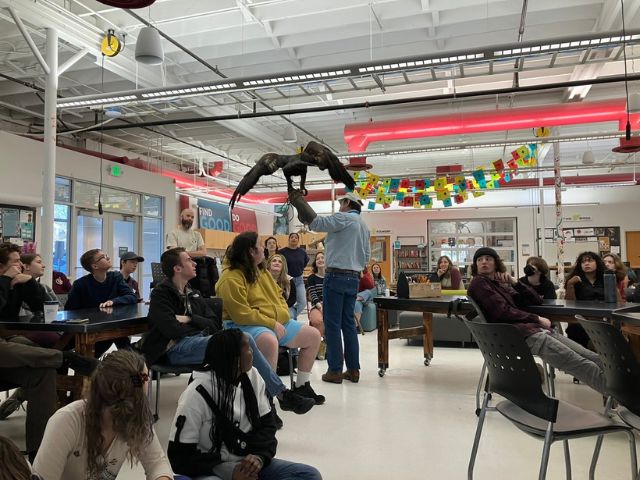
Cultivating Student Curiosity
Though Cathey was just as enchanted as her classmates by seeing the birds in person, there was something about the way the representatives from BOPP shared their passion for their jobs that she found even more captivating, and she wanted to know more.
“I’ve always liked animals since I was little, but I didn’t know how to make that a career,” she said.
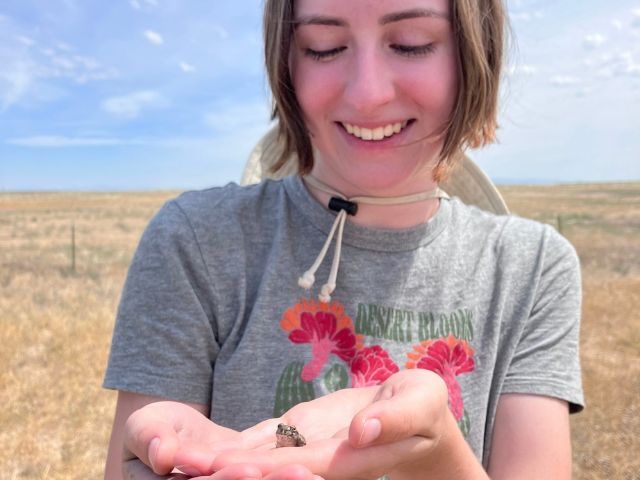
After her first field trip to the NCA in early April, and another to the Boise River a few weeks later to learn how to use the spotting scopes and other tools needed for raptor monitoring, Cathey quickly developed a passion for birding, buying her own pair of binoculars to keep up the hobby at home.
“I was really excited to get the hands-on experience of being out in the field and working with these people and my classmates, for sure,” said Cathey.
On a cold morning in late April, Cathey and ten of her classmates piled into the One Stone School van, excited for their second trip to the NCA. She didn’t know it then, but she was about to meet someone who would teach her more about STEM than she ever thought possible.
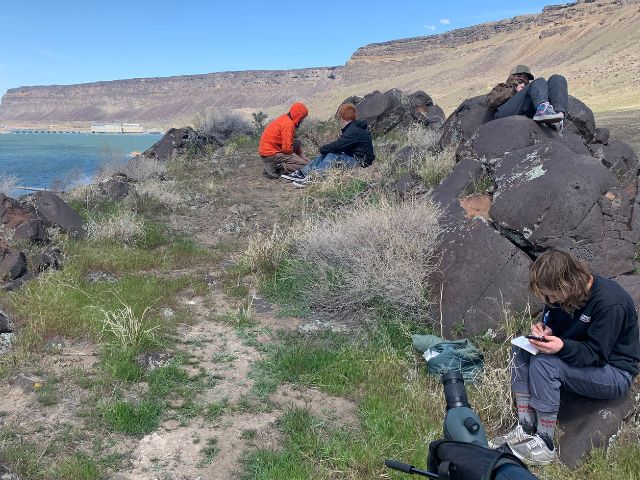
Always Be Prepared (for STEM Serendipity)
After joining up with Steve Alsup, the director of BOPP, and reps from BLM, the school group made their way to the first raptor nest monitoring site as planned. However, they soon came across a scientist conducting a field survey—Alsup recognized the truck belonged to Kevin Warner, a natural resource specialist with the Idaho Army National Guard’s (IDARNG) Environmental Management Office. Having known Warner for many years, Alsup convinced the group to stop and say hello.
“We sort of pulled him out of his field truck and made him do an impromptu presentation on how he got into a STEM career and what his job is like,” said Alsup.
Warner discussed the unique land management partnership between BLM and IDARNG (which operates the Orchard Combat Training Center within the NCA), his role assessing the potential impacts of training activities on the area’s cultural and natural resources, and his experience with managing the entry-level natural resource technicians IDARNG hires each season.
This last part stuck out to Cathey. Like her classmates, she had grown to enjoy her time spent learning out in the field and was beginning to think a future in biology might be possible. Now she stood in front of the person who could make that future a reality. Sharking off her nerves, she decided to ask him if there were any open positions for the coming season.
“Unfortunately, I had a full crew at that point,” said Warner. “Besides, I normally require at least one year of college coursework to apply, so it’s not typically available at the high school level.”
But Warner saw that spark in Cathey that he had seen in so many young people in his field, and he didn’t want to douse the flame. He gave her his contact information and suggested she apply anyway. “I thought, well, this will be a good learning opportunity for her,” said Warner.
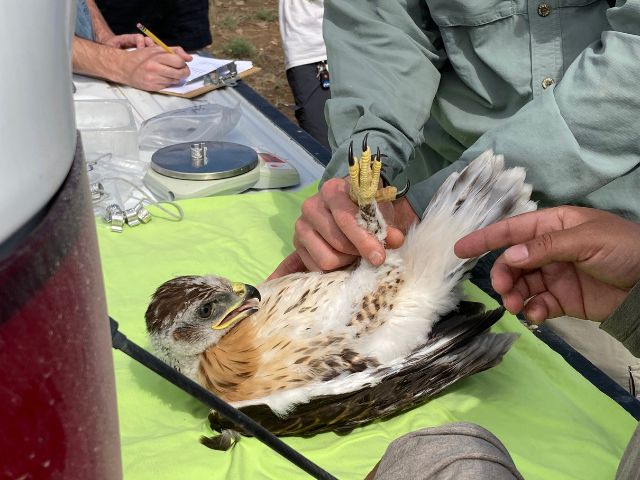
Encouraging Students to Take Big Risks
Undeterred, Cathey returned to One Stone and immediately got to work on her application with help from Teague Scott, her academic advisor, and Alsup at BOPP. They worked together to build out her resume and cover letter and hone her interviewing skills, with the idea that this would be her final project for the school year.
And then Warner called. One of his new hires had dropped out at the last minute, and he needed to fill the position before the rapidly approaching start of the season. Provided she was still interested and would graduate before the start date, he encouraged Cathey to sit for an interview.
She accepted. And she crushed it.
“Abella interviewed so well and was so qualified, I thought, ‘this is a no-brainer, I need to hire this person,’” said Warner. “She interviewed as well, if not better than, people in their second year of college.”
Cathey managed to remain humble about the experience. “I definitely got my interview skills from One Stone,” she demurred.
The final few weeks of the school year were a blur. Students presented their final projects in May, and in mid-June, five of them returned to Birds of Prey NCA for an optional post-graduation field trip to help with banding a nest of baby ferruginous hawks. However, Cathey wasn’t one of them.
Because she was already there, a full-fledged member of the Idaho Army National Guard, ready to start her first day as a natural resource technician.
“It was fun to be able to experience that with other people, like, ‘wow, you work for the Guard,’” said Cathey.
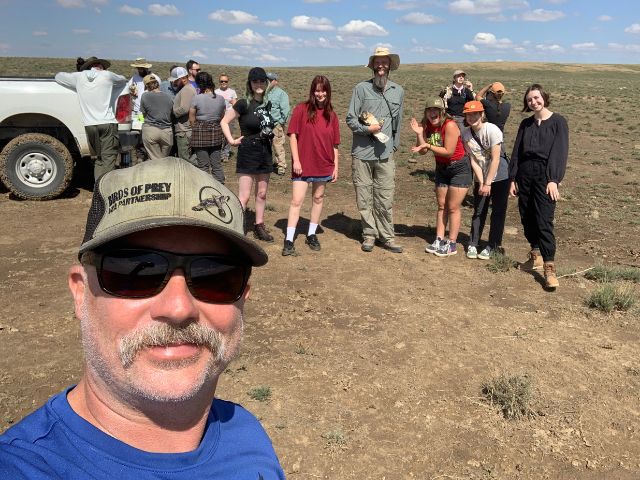
STEM Can Inspire Students in Unexpected Ways
Looking back on a summer spent toiling in the high desert heat for 10 hours a day, Cathey has only fond memories of her experience as a natural resource technician.
“It was the coolest opportunity to be a part of,” said Cathey. “I got to work with so many different animals and plants, and I really loved my team. It felt like I was doing something important.”
However, it was Cathey’s final day with IDARNG that would leave the biggest impression. As an end-of-season reward for the team’s hard work, Warner set up a special activity: banding baby bats, which the NCA monitors for white-nose syndrome. This was a first for Cathey, who had never seen a bat up close, much less handled one.
She was enraptured. “I could see her eyes just went ‘boom,’” said Warner. “She immediately asked if people studied bats for a living. I told her yeah, they do. And I could see the spark right then.”
It shouldn’t surprise you to hear that Cathey, now a freshman at Boise State University, has chosen biology as her major—with an interest in bats. She even talked Warner into inviting her on an official cave survey at the NCA this March.
“After this whole experience with the [Greening STEM] project and working with the Guard, I think I would really love to be a biologist,” said Cathey.
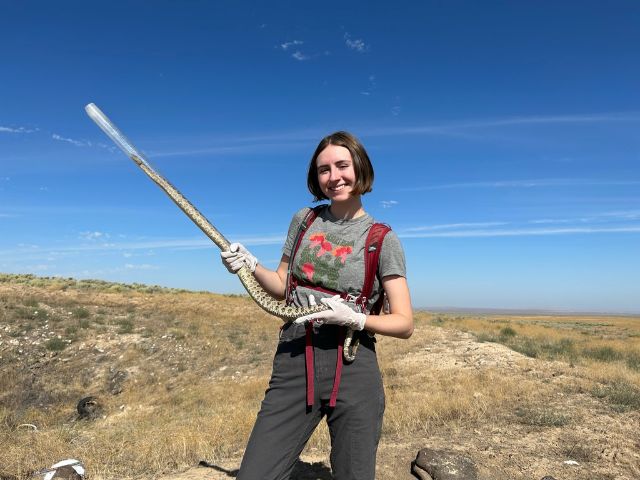
Place-based Education Prepares Students for Careers in STEM
Cathey’s story emphasizes the importance of making experiences like hers more accessible to students nationwide.
“Getting students onto a path for a STEM career is a major goal of the Greening STEM program, so this story was particularly exciting to hear,” said Megan Willig, program manager for environmental education at NEEF.
Alsup and BOPP attribute the success of this project to the strong connections within the STEM community in Idaho’s Treasure Valley area, and the willingness of more established members to lift up newer ones.
“On the last day of the project, we hosted an information sharing session with everyone from Abella [Cathey], to some kids with a year or two of college, to some less-traditional biologists starting out as natural resource techs, and have a real conversation with the students about the many different paths to getting a job in STEM,” said Alsup. “I know I would’ve appreciated having that information as a high school student—it would’ve helped me feel more confident getting into the field.”
- Want to learn more about NEEF’s Greening STEM approach? Visit our Greening STEM Hub and view examples of other successful Greening STEM projects. Interested in supporting a Greening STEM project in your community? Contact our Development team.
